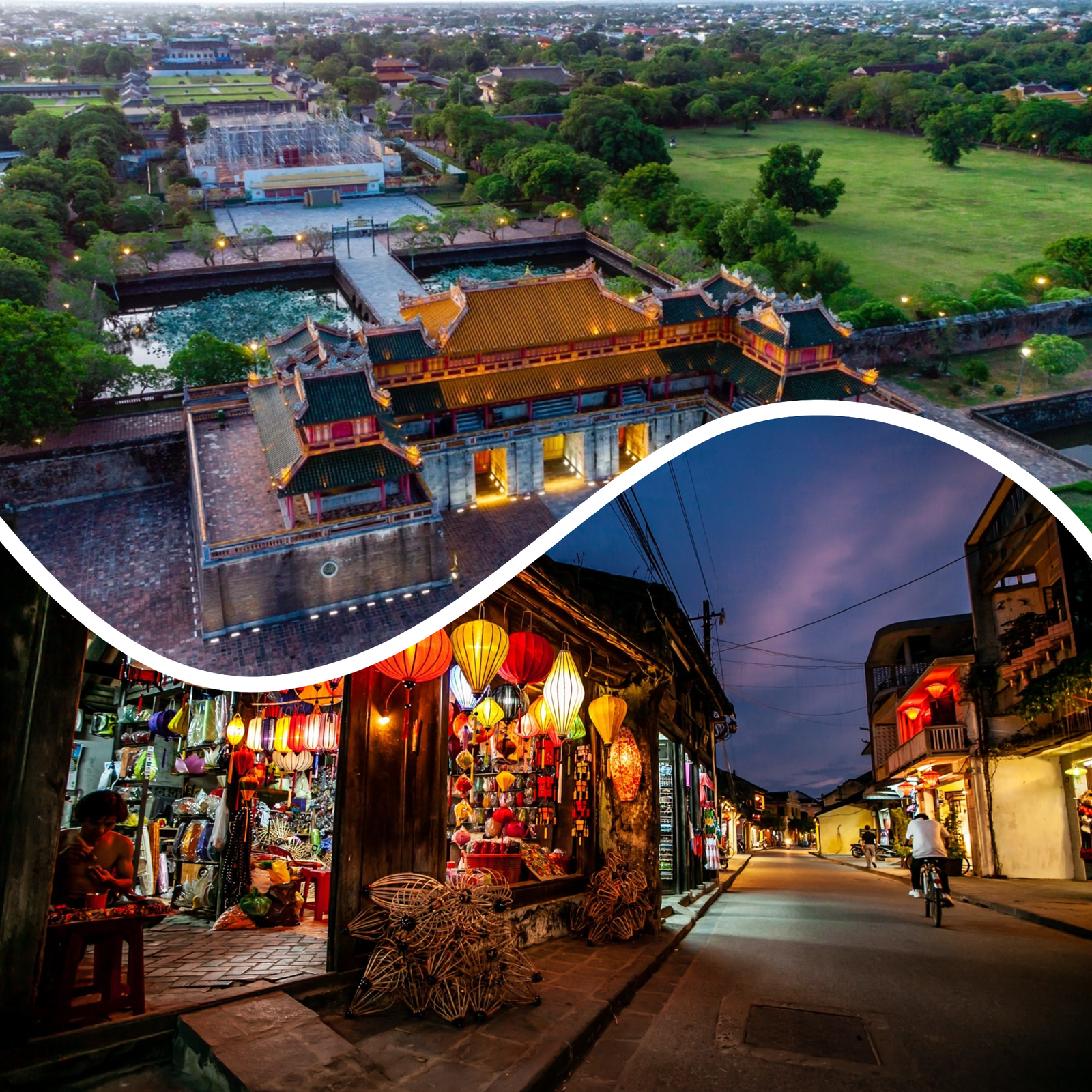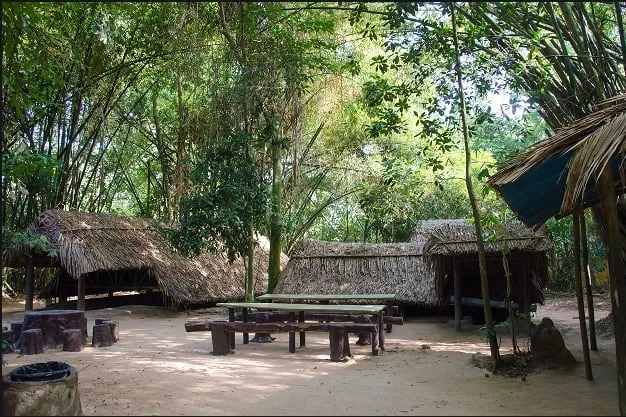Contents
ToggleWhere Are Hue and Hoi An Located?
Hue and Hoi An are two of the most popular cultural destinations in Central Vietnam, each offering a unique window into the country’s rich heritage and scenic beauty.
📍 Hue: Vietnam’s Imperial City
Hue is located in Thua Thien-Hue Province, about 700 kilometers south of Hanoi and roughly 100 kilometers north of Da Nang—a journey that takes around 2.5 to 3 hours by car or train from Da Nang. Nestled along the Perfume River and surrounded by mountains, Hue was the former capital of the Nguyen Dynasty and served as the political and cultural heart of Vietnam from 1802 to 1945.
Today, Hue is best known for:
The Imperial City (Citadel) – a massive UNESCO World Heritage site
Royal tombs, pagodas, and ancient temples
A deep-rooted tradition of imperial cuisine and court music
It’s a city where history feels alive, perfect for travelers interested in Vietnam’s dynastic past.
🏮 Hoi An: The Ancient Trading Port
Hoi An lies in Quang Nam Province, about 30 kilometers south of Da Nang—just a 45-minute drive from the city or the international airport. This riverside town was once a bustling trading port between the 15th and 19th centuries, attracting merchants from China, Japan, India, and Europe.
Today, Hoi An is renowned for:
Its well-preserved Old Town, a UNESCO World Heritage site
Lantern-lit streets, wooden houses, and ancient bridges
A rich blend of Vietnamese, Chinese, Japanese, and European influences
Custom tailors, street food, and tranquil countryside nearby
Hoi An is smaller and more laid-back than Hue, making it ideal for romantic getaways, family visits, or those seeking a slower travel pace.
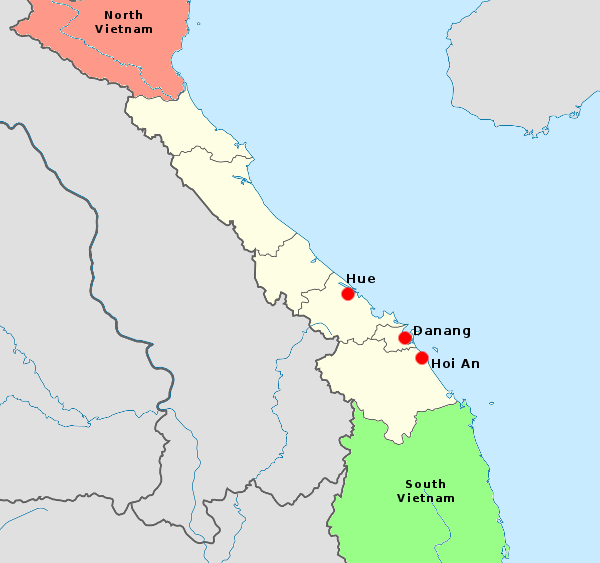
Best Time to Visit: Hue vs. Hoi An
Though Hue and Hoi An are located relatively close to each other in Central Vietnam, they experience slightly different weather patterns due to geography—particularly Hue’s position north of the Hai Van Pass, which exposes it to cooler and wetter conditions.
🌦️ Hue: Distinct Seasons and Heavy Rain
Hue has a more dramatic climate than Hoi An, with clearly defined seasons:
Summer (May to August): Hot and humid, with temperatures often exceeding 35°C (95°F).
Rainy season (September to December): Hue sees heavy rainfall, frequent storms, and even typhoons.
Winter (January to March): Cooler and drier, with daytime temperatures between 18°C–22°C (64°F–72°F)—a great time for exploring the Imperial City on foot.
⚠️ Note: October and November can be particularly wet, sometimes causing flooding in low-lying areas.
☀️ Hoi An: Milder Climate, But Risk of Flooding
Hoi An generally has a warmer, sunnier climate and longer stretches of dry weather. However, it is located near rivers and the coast, making it vulnerable to seasonal flooding:
Dry season (February to August): Expect sunny skies, low humidity, and beach-perfect weather, especially from April to June.
Wet season (September to January): Rain becomes more frequent, and flooding may occur between October and December, especially in the Old Town.
Despite the rainy risks, Hoi An’s atmosphere remains charming—even during the wet season—with floating lanterns, cozy cafés, and riverside walks.

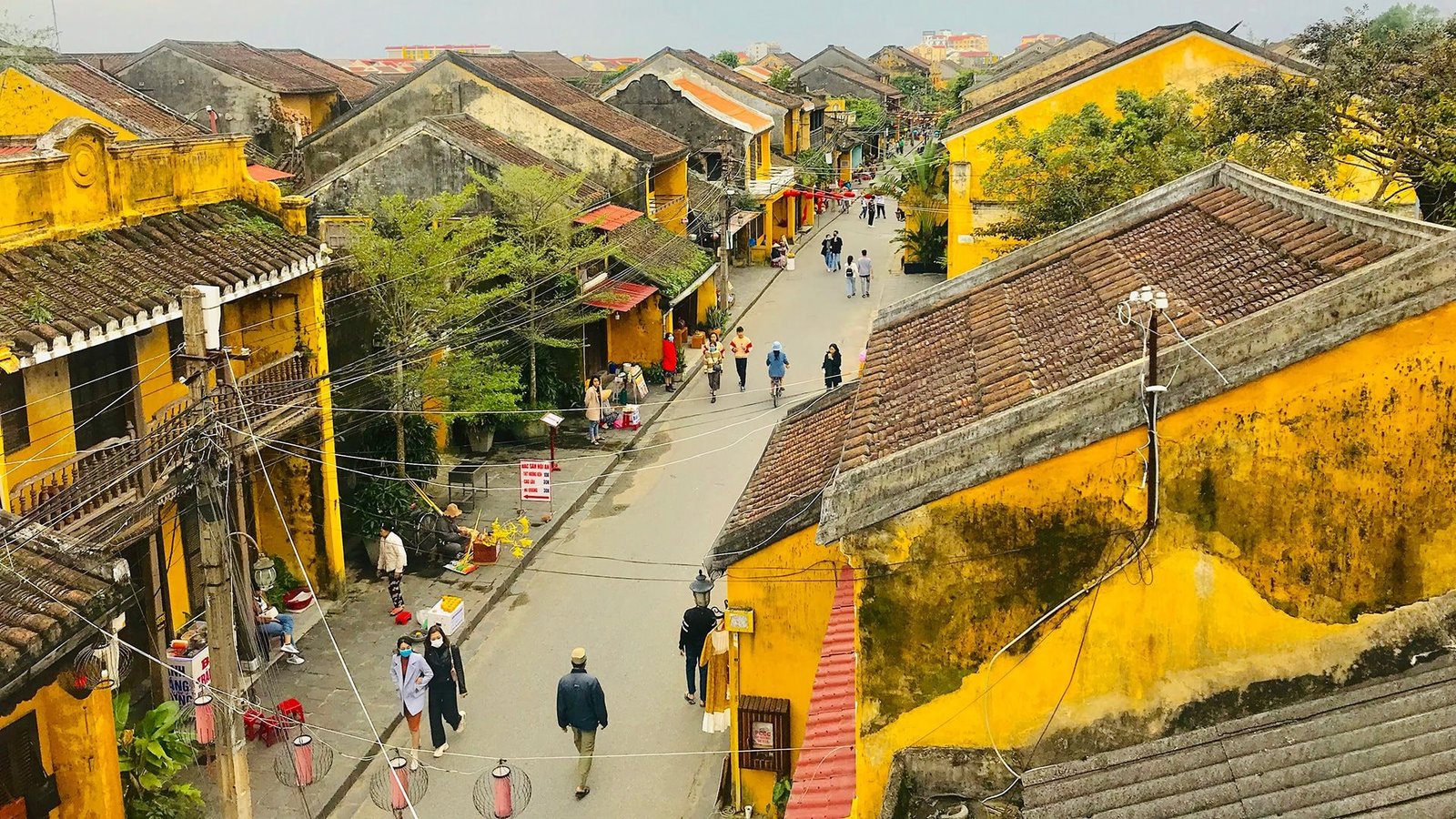
Hue vs Hoi An: What Makes Each Destination Unique?
Although both are located in Central Vietnam and offer rich cultural experiences, Hue and Hoi An deliver two very different vibes—each appealing in its own way.
🏯 Hue: Vietnam’s Imperial Past
Hue is a must-visit for history buffs and culture lovers. As the former imperial capital of the Nguyen Dynasty, the city is home to:
-
The Imperial City (Citadel) – a sprawling UNESCO World Heritage site
-
Royal tombs of emperors, set among peaceful hills and rivers
-
Ancient pagodas, including the iconic Thien Mu Pagoda
-
A more tranquil, reflective atmosphere, perfect for diving deep into Vietnam’s royal past
Hue feels less touristy and retains a quiet dignity—ideal for travelers seeking authenticity and insight into Vietnam’s dynastic history.
🏮 Hoi An: Lanterns, Charm, and Riverside Life
Hoi An, by contrast, is all about ambiance, color, and creative energy. Once a major Southeast Asian trading port, it blends Vietnamese, Chinese, and Japanese influences. Highlights include:
-
The magical lantern-lit Old Town, best explored on foot or by bike
-
World-famous tailor shops, offering custom clothing at lightning speed
-
Street food galore—don’t miss cao lầu, white rose dumplings, or bánh mì
-
The nearby An Bang Beach for a relaxing escape
-
A vibrant mix of culture, shopping, and riverside leisure
Hoi An is ideal for couples, families, and anyone looking for a slower pace, beautiful scenery, and photogenic moments at every turn.
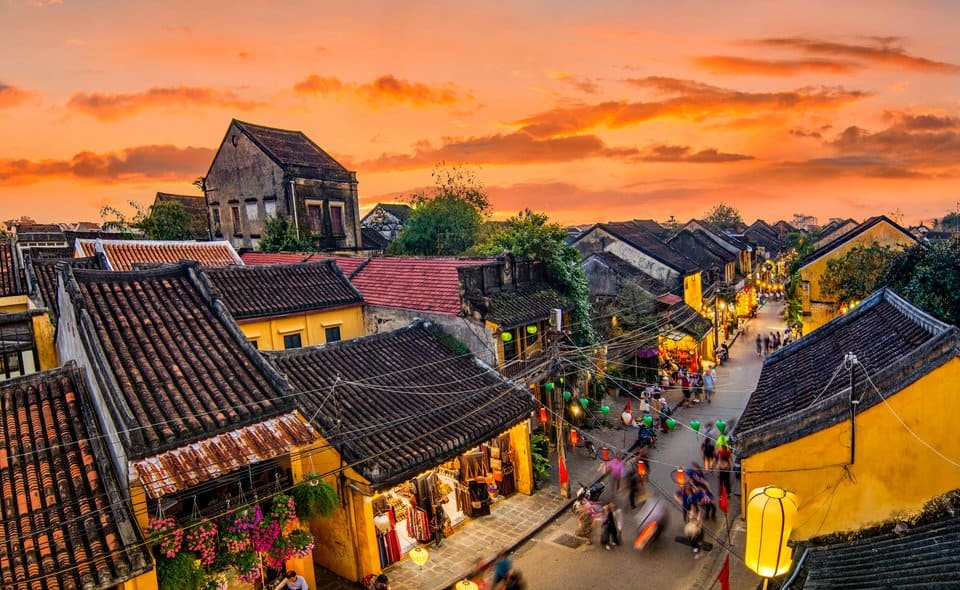
What to See in Hue: Vietnam’s Imperial Heart
1. Imperial City (Citadel)
Step back into Vietnam’s royal past at this UNESCO World Heritage Site, once the political and spiritual center of the Nguyen Dynasty. Inside the moated walls, you’ll find:
-
Ornate temples, palaces, and ceremonial gates
-
The impressive Noon Gate (Ngo Mon), once reserved for emperors
-
The Thai Hoa Palace, where royal audiences took place
📍 Tip: Arrive early to beat the crowds and heat. Guided tours add valuable historical context.
2. Thien Mu Pagoda
Located on a hill overlooking the Perfume River, this seven-story pagoda is the oldest religious monument in Hue and a symbol of the city. Don’t miss:
-
The peaceful gardens and bonsai trees
-
The old Austin car used by monk Thich Quang Duc before his self-immolation
📸 Best photo spot: From across the river at sunset.
3. Royal Tombs of the Nguyen Emperors
Hue is home to several majestic royal tombs, each offering a unique blend of nature, architecture, and history:
-
Minh Mang Tomb: Known for symmetry and traditional Confucian design
-
Tu Duc Tomb: Set in a pine forest, with poetic elegance
-
Khai Dinh Tomb: A fusion of Eastern and Western styles, featuring elaborate mosaics
🎟️ Pro Tip: Consider a combo ticket for multiple tombs to save money.
4. Tam Giang Lagoon
Escape the city and explore one of Southeast Asia’s largest lagoons. Tam Giang offers:
-
Tranquil boat rides at sunrise or sunset
-
Traditional fishing villages and stilt houses
-
An off-the-beaten-path experience for nature lovers and photographers
🏮 What to See in Hoi An: Heritage, Charm, and Culture
1. Hoi An Ancient Town
This UNESCO World Heritage-listed town is a living museum of architecture and culture. Highlights include:
-
Mustard-yellow colonial houses
-
Traditional shophouses and art galleries
-
Local markets, lantern shops, and tailor boutiques
🚶 Tip: Visit in the late afternoon when the lanterns begin to glow.
2. Japanese Covered Bridge (Chùa Cầu)
A 17th-century wooden bridge built by Japanese merchants, blending architectural influences from Japan, Vietnam, and China. It’s so iconic, it’s featured on the 20,000 VND bill.
🎯 Fun Fact: The bridge was originally built to calm a mythical sea monster beneath the town.
3. My Son Sanctuary (Day Trip)
Just over an hour from Hoi An, this ancient Hindu temple complex dates back to the Champa Kingdom. Known as “Vietnam’s Angkor Wat,” it’s set in a lush valley and surrounded by jungle-covered hills.
📸 Best time to visit: Early morning to avoid heat and crowds.
4. Fujian Assembly Hall (Phuc Kien)
This beautifully preserved Chinese-style assembly hall is one of Hoi An’s most ornate temples. Highlights include:
-
A grand gate and dragon fountain
-
Shrines dedicated to the sea goddess Mazu
-
Intricate carvings and vivid altars
🎟️ Tip: Included in the Hoi An Old Town ticket package (which grants access to 5 sites of your choice).
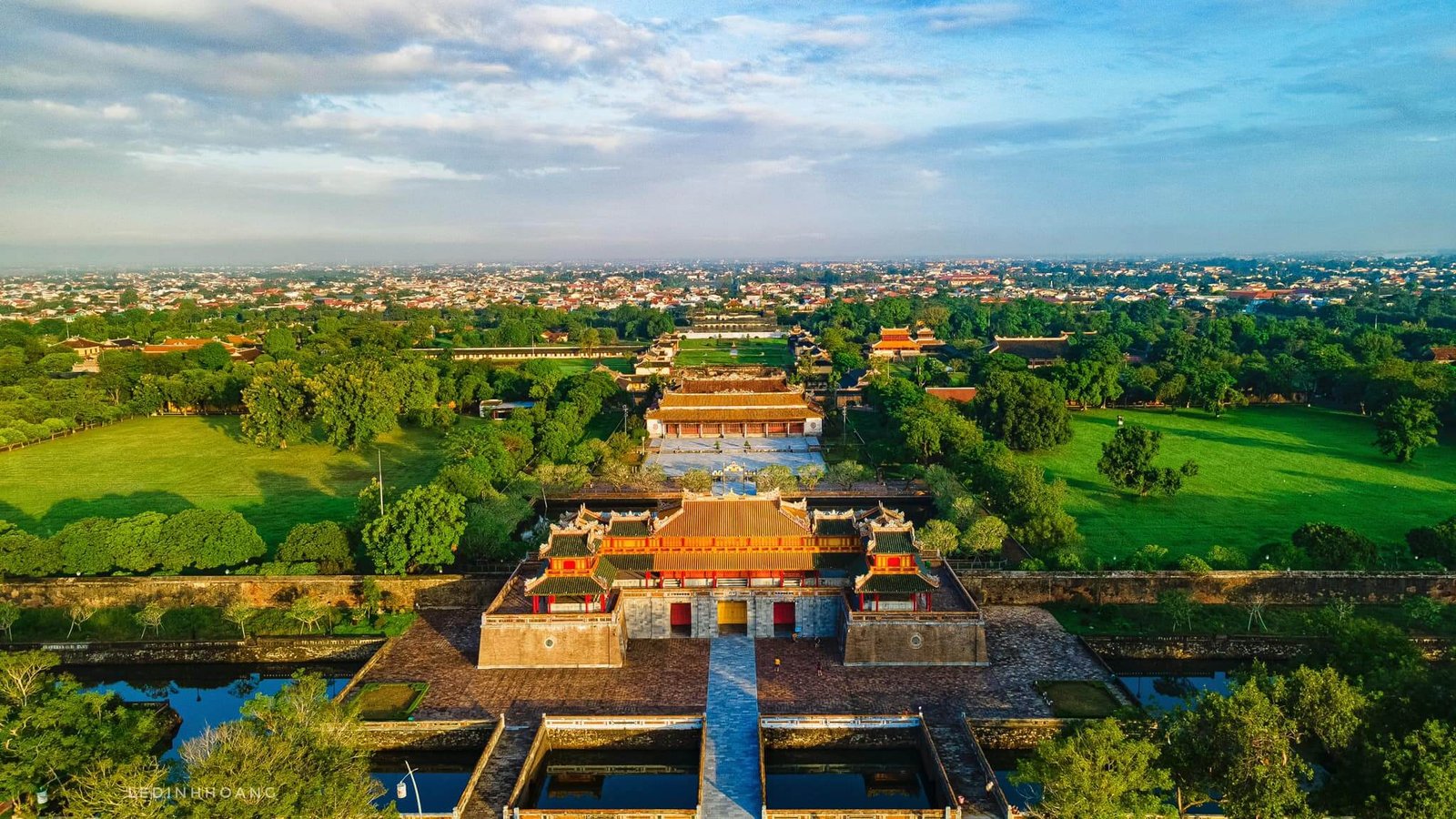
Which Is Easier to Access: Hue or Hoi An?
✈️ From Da Nang (Central Vietnam’s Transport Hub)
-
Hoi An is the easiest to reach, located just 45 minutes from Da Nang by:
-
Taxi or private car
-
Shuttle bus or minivan
-
Motorbike (great for scenic rides)
-
-
Hue is about 3 hours north of Da Nang via:
-
Car or motorbike over the Hai Van Pass (a stunning coastal route)
-
Bus or limousine van
-
Train (a scenic and affordable option)
-
🛫 From Hanoi or Ho Chi Minh City
-
Step 1: Fly to Da Nang International Airport (DAD) – the nearest major airport to both cities.
-
Step 2: Choose your destination:
-
Hoi An: Transfer by road only (no train station).
-
Hue: Take the train directly to Hue Railway Station, or continue by bus/car from Da Nang.
-
🎯 Pro Tip:
-
Choose Hoi An if you prefer a quick, hassle-free transfer.
-
Choose Hue if you enjoy slow travel, love scenic train journeys, or want a deeper dive into Vietnam’s imperial past.

Why Not Visit Both Hue and Hoi An?
Still debating between the historic charm of Hue and the riverside romance of Hoi An? The truth is—you don’t have to choose. With just a few hours of travel between them, visiting both cities is not only possible but highly recommended!
🛕 Start in Hue, Vietnam’s former imperial capital. Dive into centuries of history as you explore the vast Citadel, visit peaceful royal tombs, and cruise the Perfume River past ancient pagodas. Hue offers a deep cultural experience rooted in the legacy of the Nguyen Dynasty.
🚗 Next, journey through the iconic Hai Van Pass—a winding coastal road that delivers some of the most breathtaking views in Vietnam. Stop along the way to admire mountain vistas, deserted beaches, and misty hilltops. It’s a highlight in itself, whether you’re traveling by car, train, or motorbike.
🎨 Finally, arrive in Hoi An, a UNESCO World Heritage Site famed for its lantern-lit streets, tailor shops, and relaxed riverside charm. Spend your days cycling to the beach, exploring old merchant houses, and dining on delicious street food.
🧭 This route is ideal for a 5–7 day itinerary through Central Vietnam, offering the perfect balance of history, scenery, and laid-back atmosphere. It’s a journey that blends the best of Vietnam—past and present—into one unforgettable adventure.
Final Thoughts
Hue and Hoi An are both jewels of Central Vietnam, each offering a distinct kind of magic. Whether you’re drawn to Hue’s solemn historical sites or Hoi An’s whimsical lantern-lit streets, you can’t go wrong.
If time allows, visit both and experience the full spectrum of Vietnam’s cultural beauty—from emperors and citadels to markets and silk lanterns.
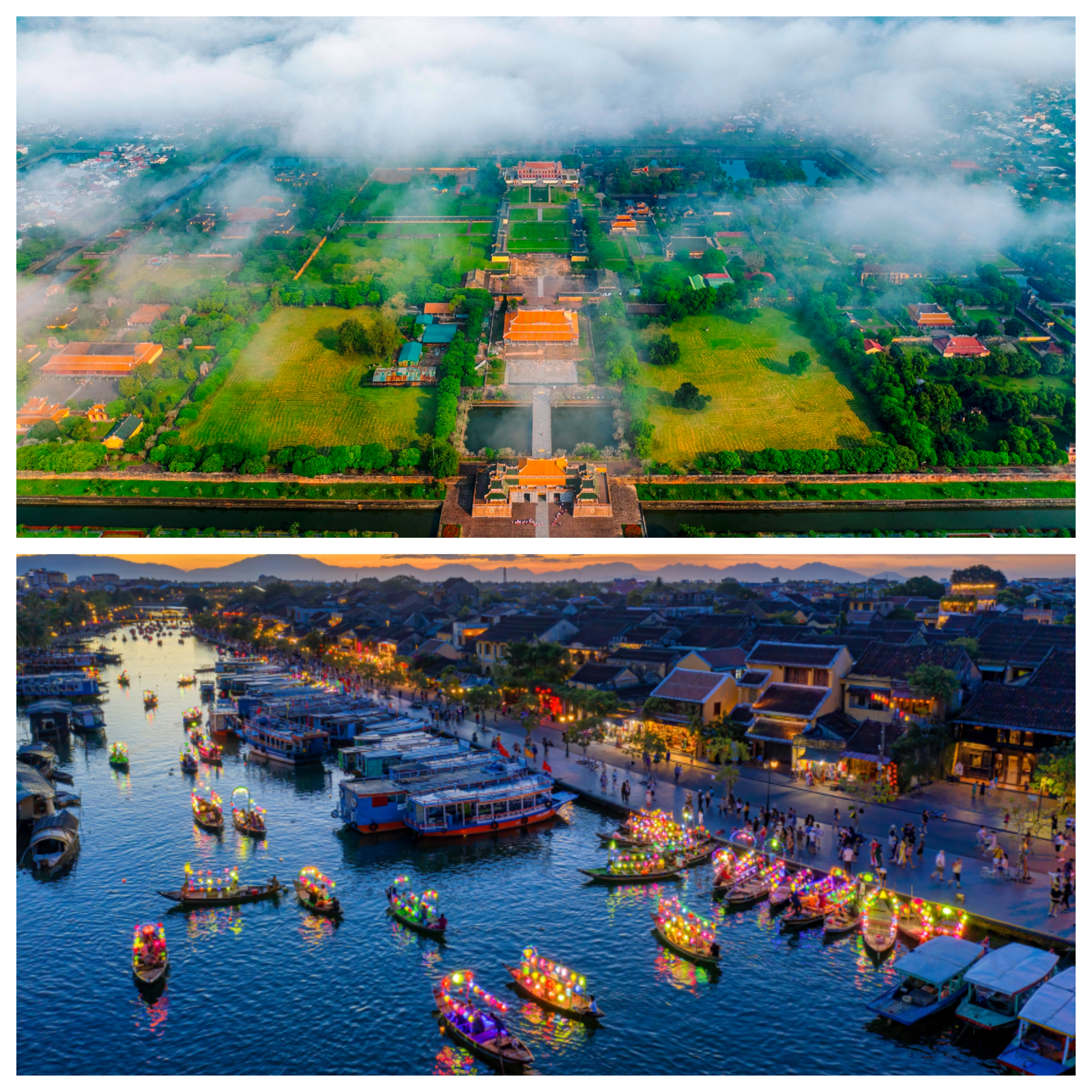
Conclusion
Both Hue and Hoi An offer unforgettable travel experiences that reflect the rich cultural tapestry of Vietnam. Hue captivates visitors with its imperial heritage, royal architecture, and tranquil ambiance, while Hoi An charms with its well-preserved ancient town, vibrant lanterns, and riverside atmosphere. Whether you’re drawn to history, cuisine, scenery, or simply a peaceful retreat, each destination has something unique to offer. If time permits, we highly recommend visiting both cities to truly appreciate the diversity of central Vietnam.












